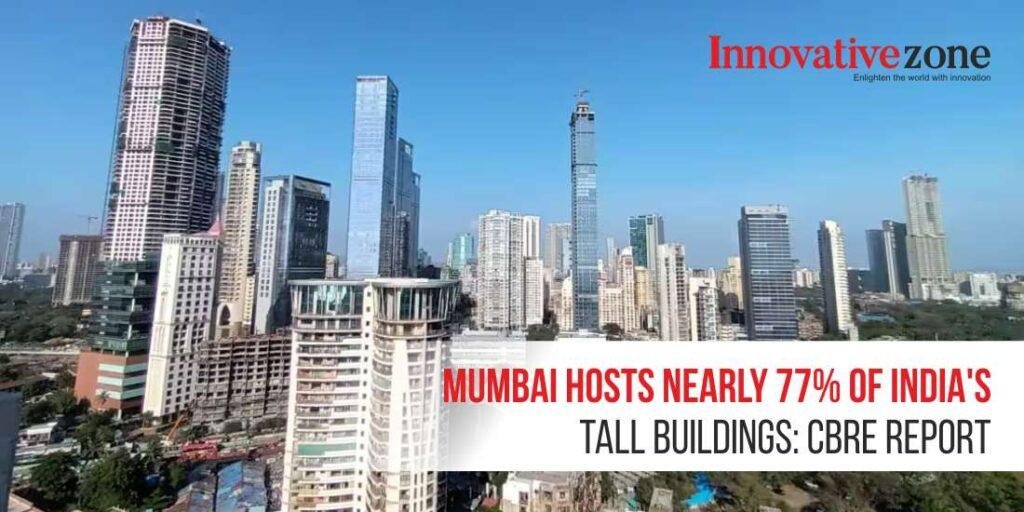Mumbai Hosts Nearly 77% of India’s Tall Buildings: CBRE Report
Written by Sanjay Kumar
A report by CBRE South Asia has revealed that Mumbai, the financial capital of India, is home to approximately 77 percent of the tall buildings in the country. The report highlights that Mumbai’s premium real estate prices make it economically viable for the construction of tall buildings, further contributing to its prominence.
Following Mumbai, other cities such as Hyderabad, Kolkata, Noida, Gurgaon, Bangalore, and Chennai also have a presence on the list of tall buildings in India, with Hyderabad accounting for 8 percent, Kolkata 7 percent, Noida 5 percent, and Gurgaon, Bangalore, and Chennai each having a 1 percent share.
The report, titled ‘Sky is the limit – Rise of tall buildings in India,’ states that Mumbai boasts over 100 tall buildings with heights exceeding 150 meters. This ranking places Mumbai at the 17th position globally and 14th in Asia. Notably, Hong Kong leads the world in terms of tall buildings, followed by Shenzhen, New York City, Dubai, Guangzhou, Shanghai, and Tokyo.
The classification of a tall building encompasses any structure exceeding a height of 150 meters. Within this classification, two sub-types exist: supertall buildings, defined as developments surpassing 300 meters in height, and mega tall buildings, which exceed 600 meters.
The first tall building in India was the residential Usha Kiran in Mumbai, completed in 1961, standing at 80 meters in height. Although a few more tall buildings were constructed after 1970, such as the Subhash Chandra Bose Tower in Kolkata, Oberoi Trident, and Air India Building in Mumbai, the acceleration in tall building construction in India occurred primarily after 2000, as indicated in the report.
The report attributes the surge in tall building development in Mumbai to the exponential increase in urban population and the accumulation of wealth among its residents. Additionally, decentralization in growth led to the expansion of the city towards the north and east, resulting in the emergence of new micro-markets like Malad, Goregaon, Powai, Vikhroli, and Kanjurmarg.
High-rise clusters in Central Mumbai and South Mumbai not only enjoy excellent connectivity through public transport and roadways but also command premium prices in the real estate market compared to other areas of the city.
Furthermore, the report reveals that more than 90 percent of tall buildings in India are residential, while only 5 percent are office buildings. The limited number of office towers is attributed to higher water and electricity requirements per capita compared to residential buildings, along with public safety considerations. Evacuation procedures are relatively easier in residential buildings due to a lower average number of occupants per floor, whereas office buildings with higher occupancy present additional challenges in terms of safety measures, such as fire hazards, vertical transportation, and provision for public services.
Must Read:-
- Top 10 Largest Oceans and Seas in the World
- Top 10 automobile companies in India 2023
- Top 10 Electrical Companies in India 2023
- Top 10 Real Estate Companies in India-2023
- Top 10 most awaited & upcoming Hindi web series 2023-24
- Top 10 Clothing Brands in India 2023
- Top 10 best cultures in the world-2023
- Top 10 best country to work and live in 2023
- Top 10 best country for education 2023
- Top 10 Most Followed Celebrities on Instagram 2023
- The Inspiring Success Story of Bear Grylls
- Top 10 Business Coaches in The World to Guide Entrepreneurs In 2023
- Top 10 movies based on True Stories you must watch before you die
- Top 10 Best Online Doctor Consultation Apps in USA


